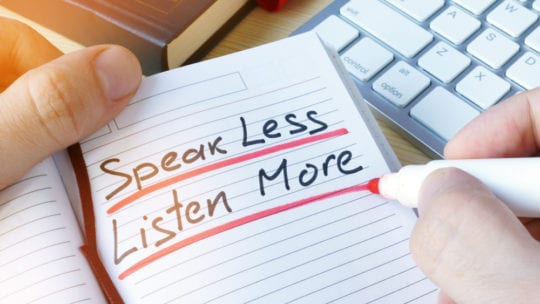
Important lessons can emerge from tragedy. For Deirdre Breakenridge, chief executive officer at Pure Performance Communications, the loss of a young family member—a recent college graduate quickly emerging as an industry talent— inspired her to look at the communication gaps between millennials and other generations.
Breakenridge began her research passion project by studying how people interact, the levels of integrity, openness, authenticity, passion and empathy. Not surprisingly, the increase in communication touchpoints in a technology-driven world suggested an increase in stress and higher anxiety that played out in daily exchanges.
Breakenridge, a 30-year communications industry veteran, will discuss her research and development of FEEL First, a model for empathetic intergenerational communication, as the keynoter for PRNEWS’ Top Places to Work in PR & Agency Elite Awards on Nov. 21 in New York City.

We spoke to Breakenridge about the goals of FEEL and how companies can benefit from an emotional intelligence approach with employees.
How have you seen the PR industry change in your years? What do you think is its most pressing issue?
The biggest challenges include achieving the transparency, openness, and human interaction in communications required by a dynamic public, connected by smartphones that are always within reach. At the same time, companies need to uphold ethical values as communication hastens and stakeholder groups share opinions and perceptions more quickly on social media. At the same time, the fact-checking and the double-checking of credible sources that used to take place in PR are often absent. Values, ethics, accuracy, and empathy, in many cases, are also taking a back seat rather than being front and center in company communications.
Where did the FEEL First program come from? What is the goal?
FEEL First, which is an acronym for facing your Fears, engaging with Empathy, using Ethics and good judgment, and unleashing the Love of your mission, was born after experiencing a tragic family loss. Wanting to understand millennial communication was the impetus behind the FEEL model. How did millennials show up to their conversations and how much do they share? How do millennials want to be perceived, and what do they expect from others (the business professionals around them)?
What millennials prefer and want from leaders who communicate is not what they are receiving. The goal of the FEEL model is to identify how business professionals show up to their conversations and to score on a FEEL scale their ability to FEEL First through communication touchpoints to build stronger relationships and unbreakable bonds.
What types of organizations can benefit from Feel First?
Organizations wanting to attract and retain millennials need FEEL to become a part of company culture, building an environment of trust and purpose. Also, organizations marketing to millennials will have to FEEL before they communicate, knowing how to lead with an open perspective, an empathetic approach, with strong values intact and a passion that meets and can even raise the enthusiasm of their millennial audience.
How can agencies/brands begin to make their environments more empathetic?
The first step to creating a more empathetic environment is to check your ego at the door. You do not have to abandon your creativity, confidence, or strong opinions. Instead, when you get your ego in check, you are letting other professionals know they have a voice in a trusted space and an entrepreneurial environment where people can feel pride and take ownership in their work. When people feel you have listened, then they share more.
What is one simple tip to include more empathy in your everyday work conversations/transactions?
Become more present by minimizing your stress. How you show up to the conversation will determine how the conversation goes. If you are frustrated and feeling overwhelmed, then you have less of a chance of reaching an understanding with your peers or experiencing the benefits of an open sharing environment.
Follow Deirdre Breakenridge, and learn more about her research here.
